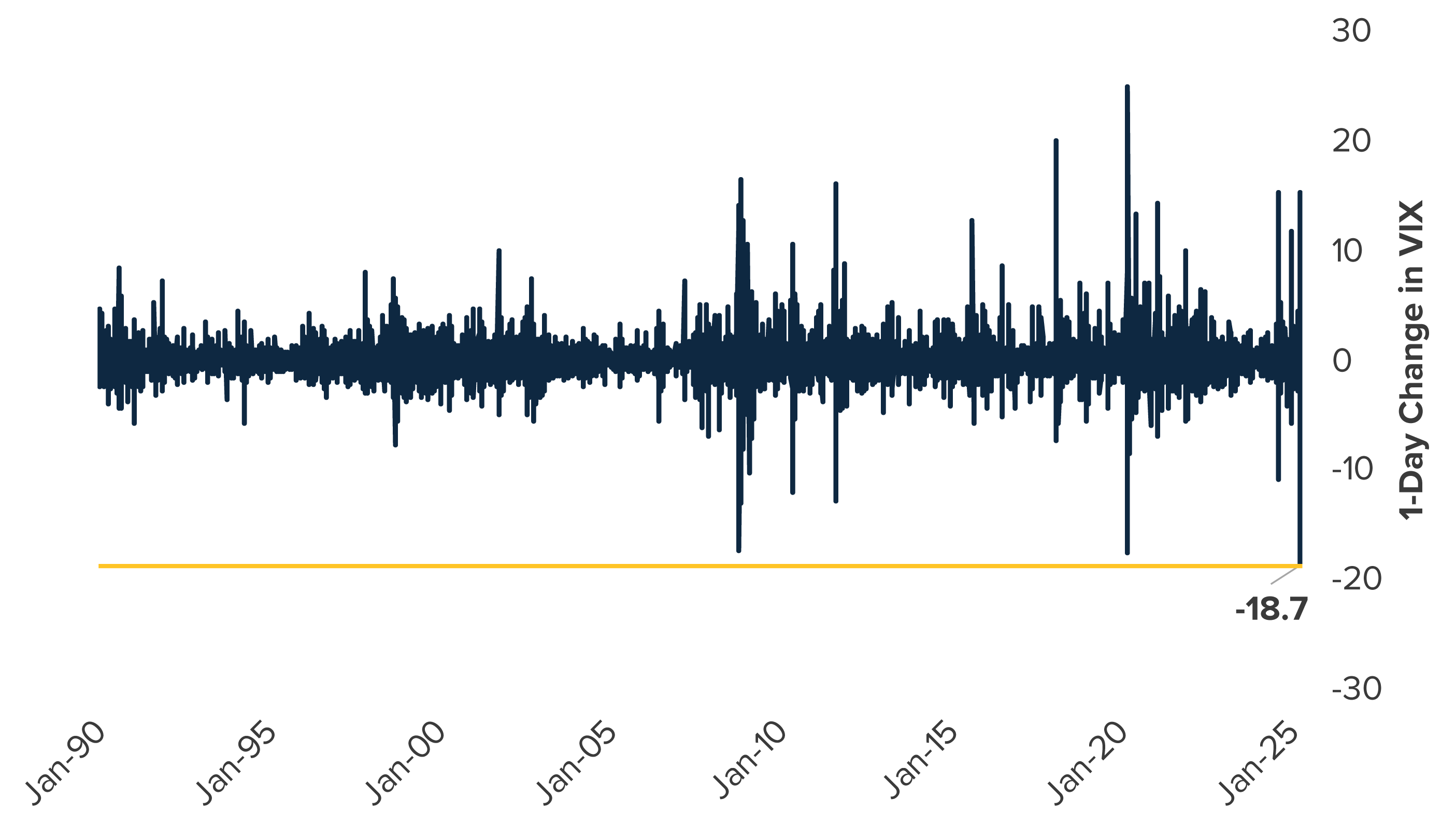Although uncertainty remains, perpetual market swings may be less frequent
While still higher than what Wall Street would prefer, market volatility has trended lower this week, providing investors with a much-needed opportunity to catch their breath. What’s more, some developments suggest this volatility could remain at more moderate levels for now.
Last week, the CBOE Volatility Index (VIX) saw its biggest one-day decline ever — plummeting 18.7 points following President Trump’s decision to pause some tariffs.
That plunge exceeded all other one-day drops for the VIX, including those that occurred during the 2008 financial crisis and the pandemic (see the chart). It also coincided with a massive 9.5% rise in the S&P 500.
History of One-Day Changes in the CBOE Volatility Index (VIX)
Source: Bloomberg, calculations by Horizon Investments, data as of 04/15/25.
Even with this recent decline, volatility remains higher than during much of the past few years. Since the announcement of the pause, the President has modified other tariff policies and suggested that different tariffs may be implemented, fueling continued uncertainty among investors.
We believe there are a few key signs that suggest a drop in volatility is warranted:
- The most extreme tariff policies are primarily aimed at China, rather than being broadly based.
- Tariffs appear to have primarily been a negotiating tool — making them a man-made problem that can be unmade.
- The “Trump put” is alive and well, as evidenced by the fact that Trump retreated from his aggressive stance when faced with market turmoil – which should embolden dip buyers.
The upshot: Continued uncertainty will likely cap stock market valuations and weigh on investors until greater clarity emerges. Although the tariff situation remains fluid, we believe the roughly 10% daily and weekly market swings seen in recent weeks are behind us for now.
